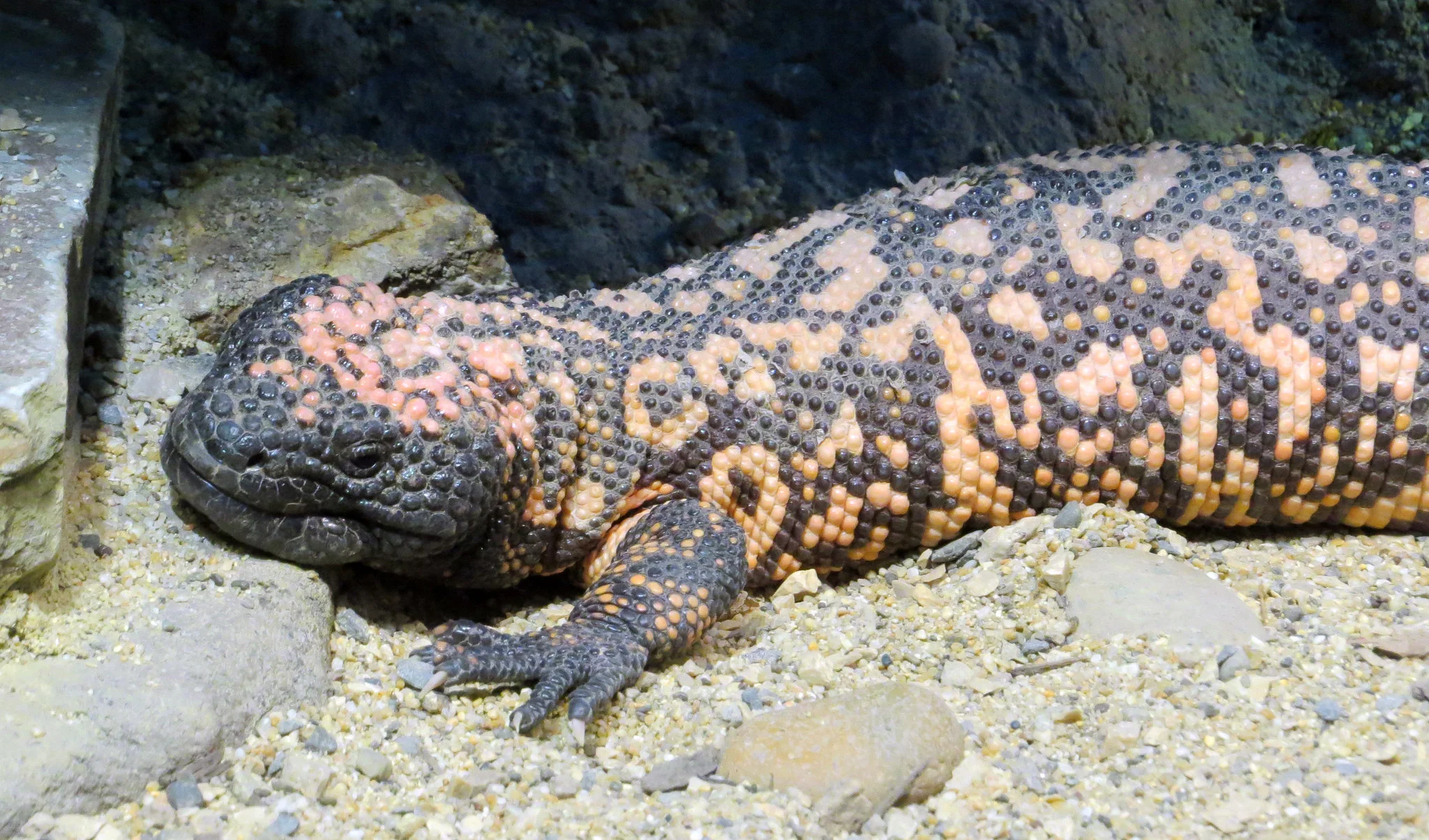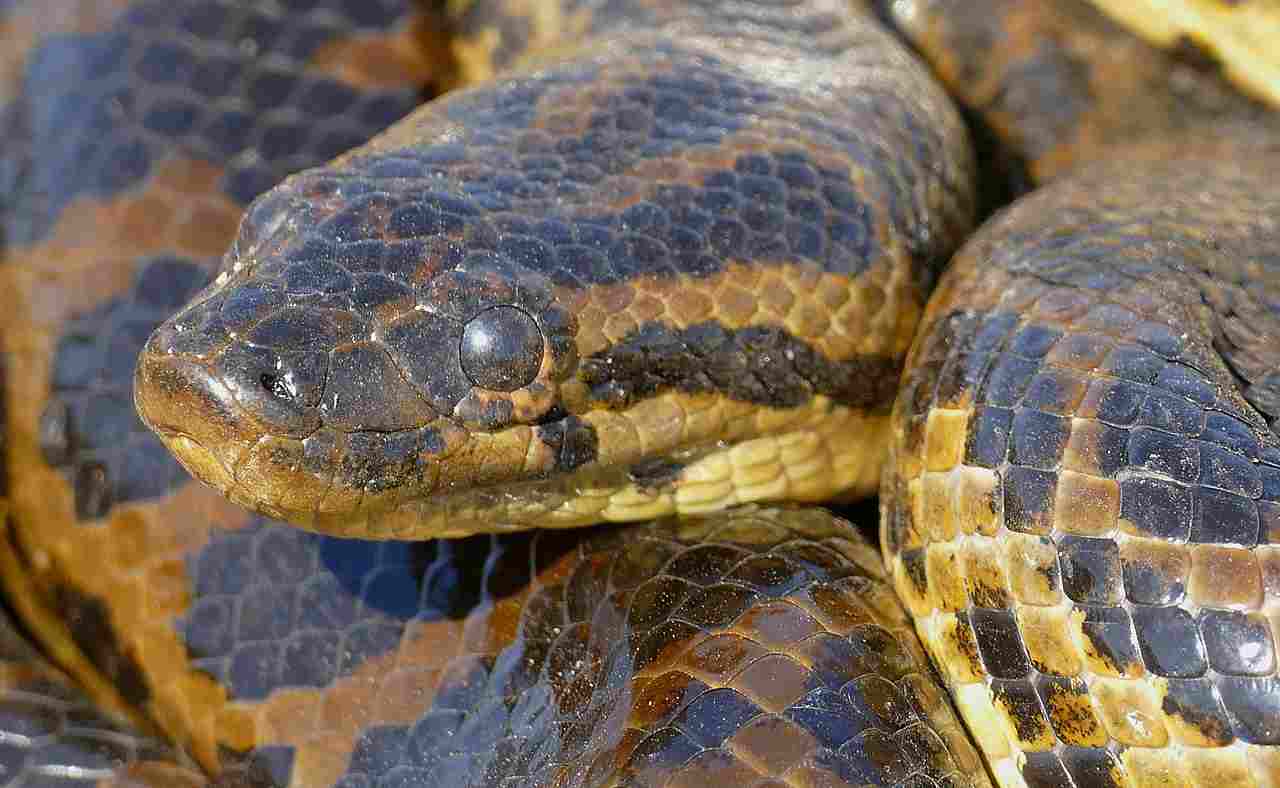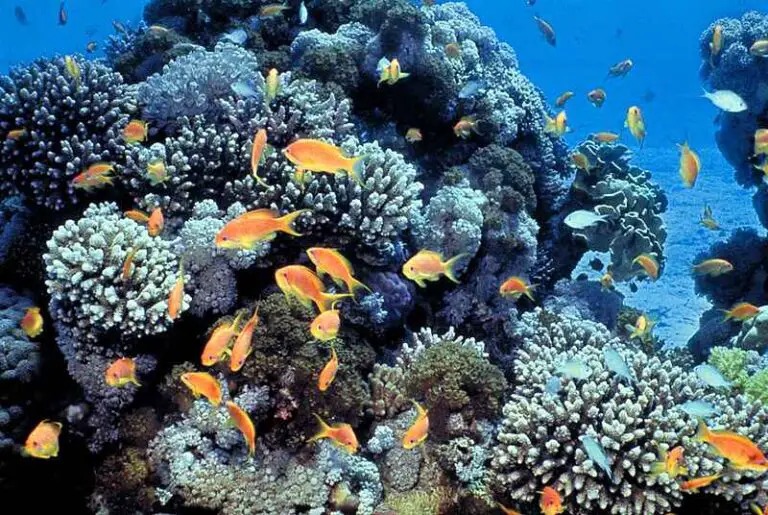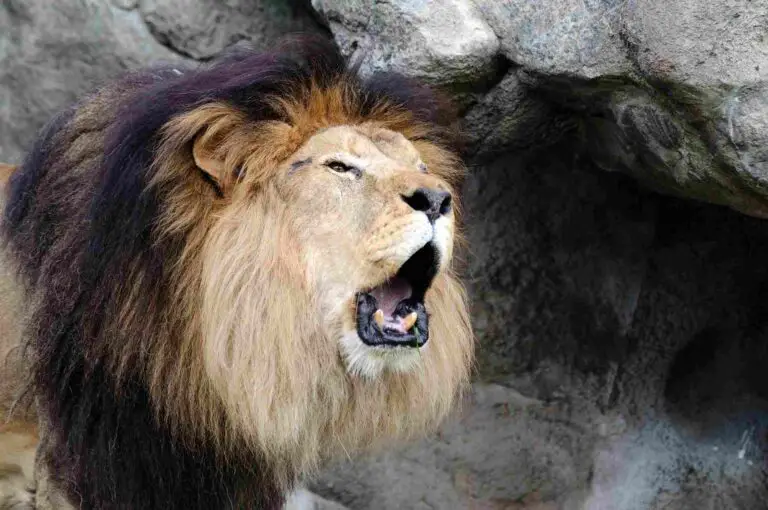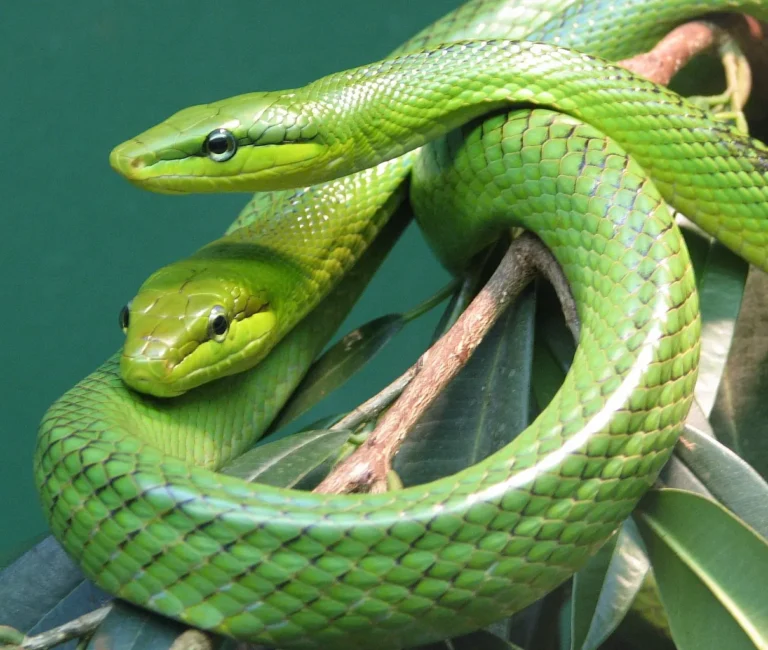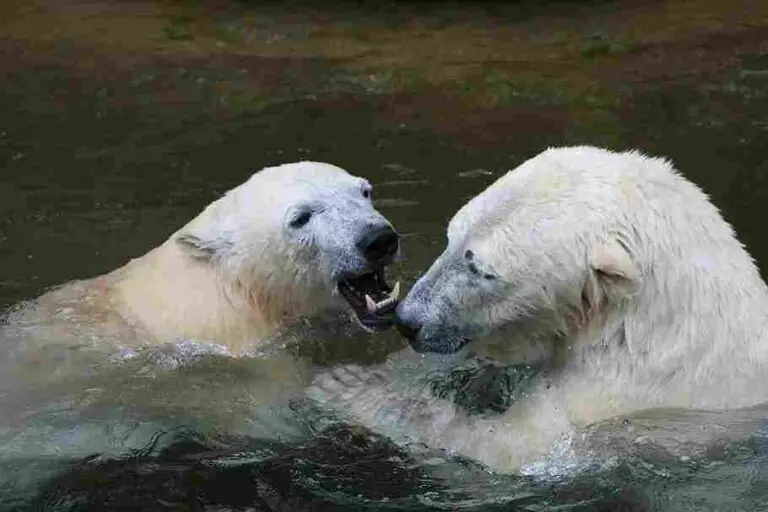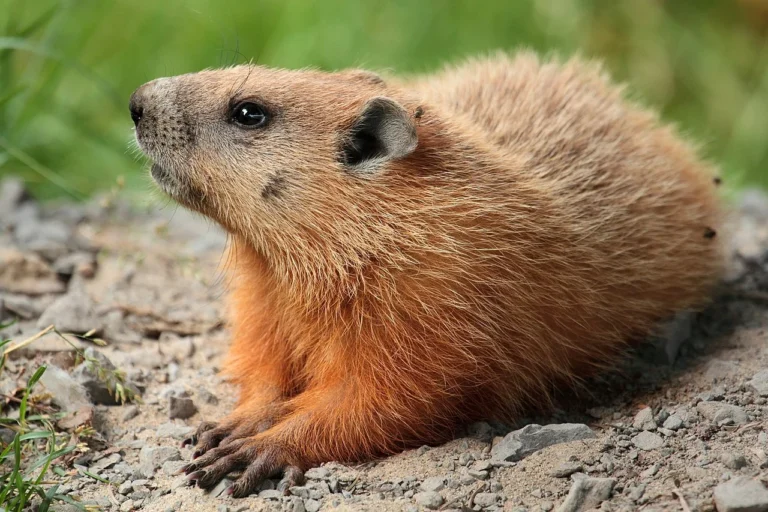Komodo Dragon Vs Cobra Venom, Size, Weight, Overall Comparison
Contrasting the Komodo dragon and the cobra brings to light their distinct predatory strategies, particularly regarding venomous capabilities. While the cobra possesses venom several times more potent than that of a Komodo dragon, making it lethal to its prey within minutes to hours, the Komodo dragon’s immunity to venom, combined with its larger size, strength, and powerful bite force, positions it as the likely victor in a direct confrontation.
I. Komodo Dragon vs Cobra: Predators with Contrasting Venomous Strategies:
– The Komodo dragon and cobra, both possessing venomous capabilities, showcase differences in the potency of their venom and their strategies as predators.
II. Venom Potency:
– Cobras wield venom with a potency several times greater than that of a Komodo dragon. The cobra’s venom is lethal, capable of rapidly incapacitating and killing its prey, including animals or humans, within minutes to a few hours. In contrast, a Komodo dragon’s venom may take several hours or even more than a day to have a similar effect.
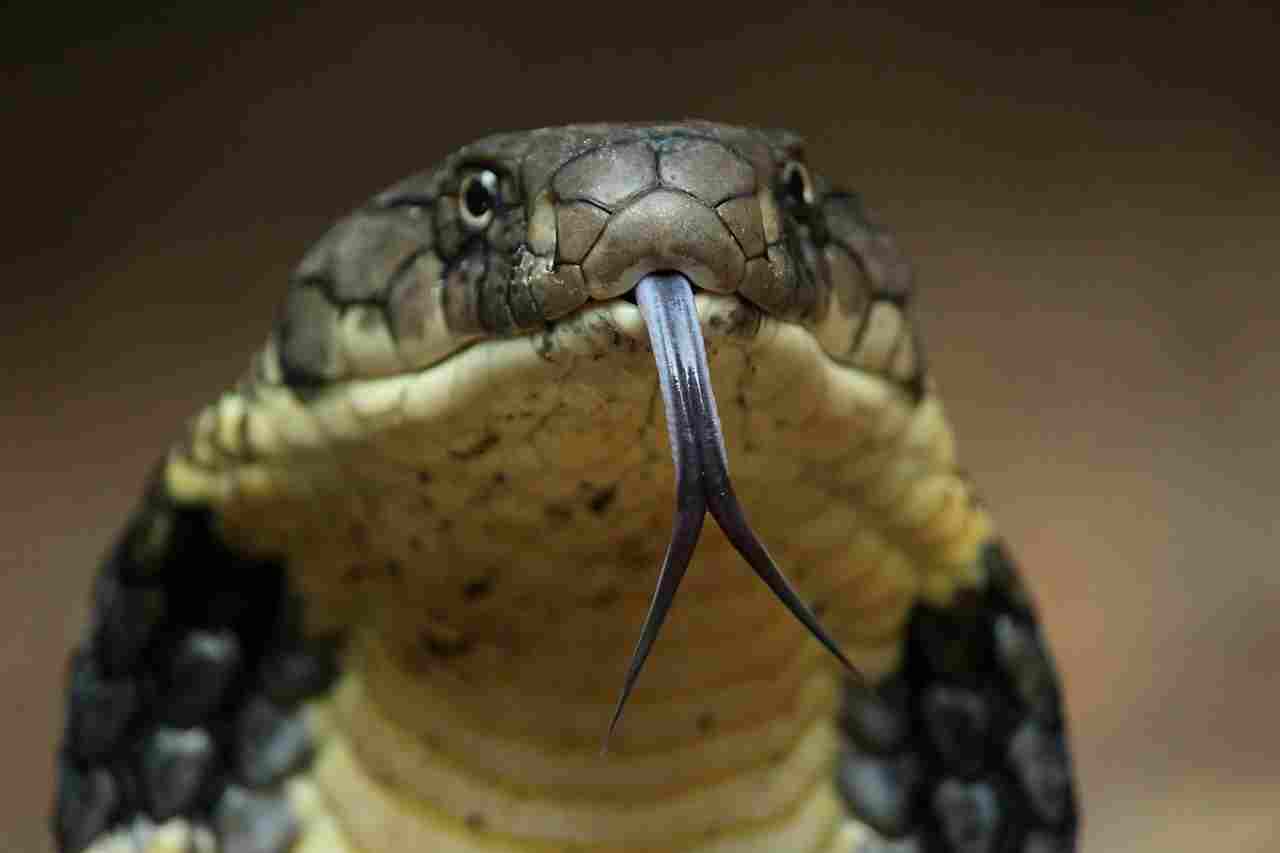
III. Immunity to Venom: Komodo Dragon vs Cobra Fight Prediction
– Despite the cobra’s potent venom, the Komodo dragon exhibits a considerable immunity to venom. This immunity enables the Komodo dragon to engage with venomous prey without succumbing to the toxic effects, creating a unique advantage in potential confrontations.
IV. Size and Strength:
– Komodo dragons, being considerably larger and stronger than cobras, hold a significant physical advantage. Their size and strength contribute to their effectiveness as predators in overpowering and subduing venomous prey.
V. Bite Force and Jaws:
– The Komodo dragon’s larger jaws and stronger bite force provide it with a formidable advantage in a fight. This advantage, coupled with its immunity to venom, positions the Komodo dragon as the likely victor in a direct confrontation with a cobra.
VI. Real-life Predator Dynamics:
– In a real-life encounter between a Komodo dragon and a cobra, the Komodo dragon’s immunity to venom, size, strength, and powerful bite force would likely lead to its victory. While the cobra’s venom is potent, the Komodo dragon’s physical advantages provide effective defense and offense.
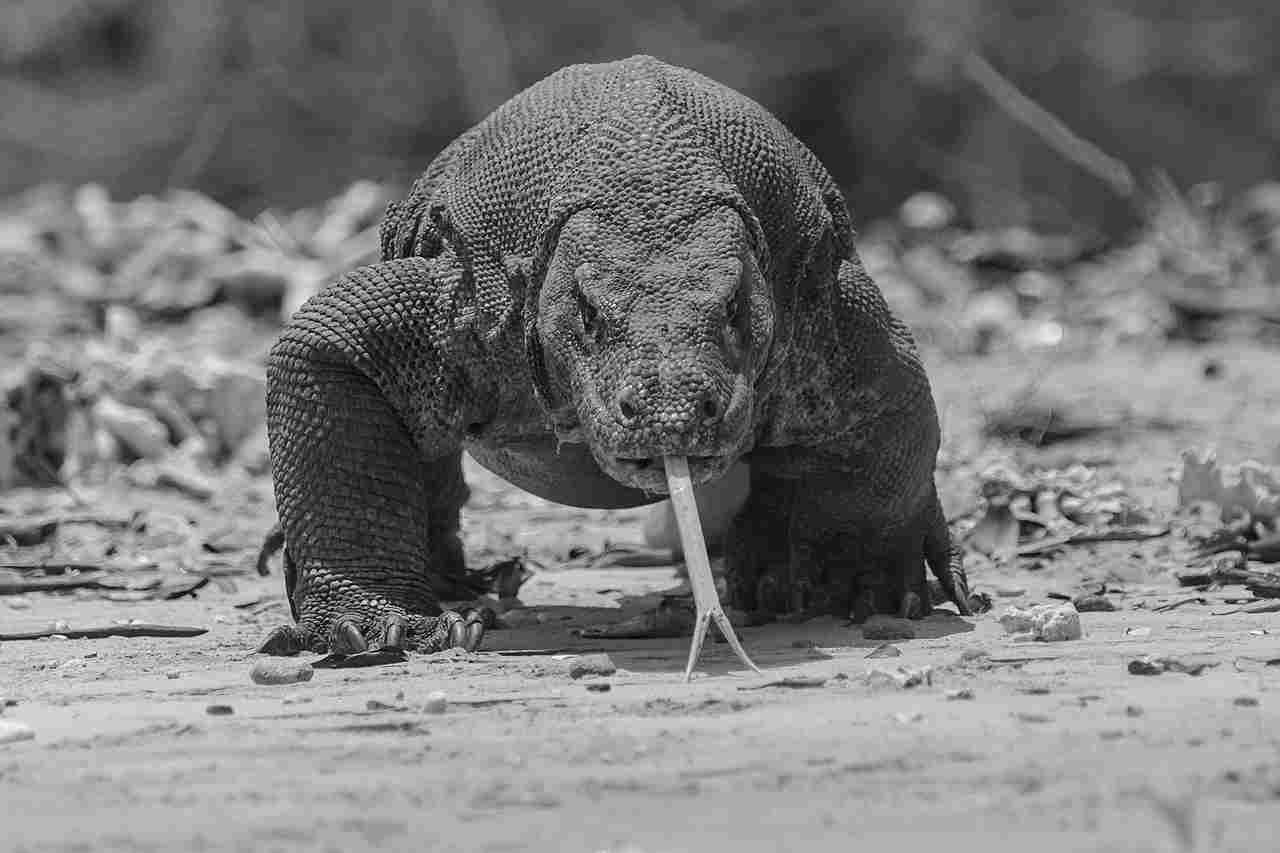
VII. Conservation Significance:
– Recognizing the unique attributes of both Komodo dragons and cobras is crucial for conservation efforts. Tailoring strategies to protect these species contributes to the preservation of biodiversity and ecosystem balance in their respective habitats.
*Details of Comparison
| Criteria | Komodo Dragon | Cobra |
| Taxonomy | Varanus komodoensis (Varanidae) |
Various species under Naja genus (Elapidae)
|
| Appearance | Stout build, rough scaly skin |
Slender body, hood when threatened, shiny scales
|
| Size | Up to 10 feet (3 meters) |
Varies by species, 3 to 6 feet (1 to 2 meters)
|
| Weight | Around 150 pounds (68 kilograms) |
Varies by species, generally lighter
|
| Bite Force (PSI) | Estimated 60-70 PSI |
Varies by species, generally lower
|
| Physical Offensive Adv. | Powerful bite, strong limbs |
Venomous bite, quick strikes, agility
|
| Physical Defensive Adv. | Thick scaly skin, defensive tail |
Hood for threat display, quick retreat
|
| Speed | 20 km/h (12 mph) |
Varies, generally faster in bursts
|
| Agility | Moderate agility, climbs and swims |
High agility, quick movements
|
| Senses | Well-developed smell, vision, hearing |
Excellent eyesight, keen sense of smell
|
| Overall Physical Cap. | Robust physical capabilities |
Agile with venom for efficient predation
|
| Habitat & Region | Tropical savannas, Indonesian islands |
Diverse habitats, widely distributed globally
|
| Tracks | Clawed tracks resembling lizards |
Serpentine tracks reflecting limbless body
|
| Lifespan | 20 to 30 years |
Varies by species, generally 15 to 25 years
|
| Mode of Feeding | Carnivorous, hunting vertebrates |
Carnivorous, preying on small mammals, birds
|
| Intelligence | Problem-solving, complex social beh. |
Some intelligence, less studied compared
|
| Social Behavior | Solitary, except during mating |
Generally solitary, some display territorial
|
| Mode of Reproduction | Oviparous, no parental care after lay |
Oviparous, no parental care after laying
|
| Parental Behavior | Limited care, eggs buried |
Limited care, eggs hidden, no post-laying care
|
| Proximity to Humans | Found on remote islands, some threat |
Adaptable, can inhabit urban areas
|
| Behavior Toward Humans | Generally avoids, can be aggressive |
May exhibit defensive behavior when threatened
|
| Danger Posed to Humans | Can be a threat, bites may cause infections |
Venomous bite poses potential danger
|
| Associated Precautions | Caution required, avoid provoking |
Caution needed in areas, awareness is key
|
| Conservation Status | Vulnerable, threats from habitat loss |
Varied depending on species, some face threats
|
Key Points
- Komodo dragons are larger and heavier, relying on physical strength, while cobras emphasize venom and agility.
- Komodo dragons have a longer lifespan and demonstrate higher intelligence and complex social behaviors.
- Cobras are more adaptable to human-inhabited areas, increasing the likelihood of encounters with people.
- Both species are carnivorous reptiles with oviparous reproduction and limited parental care.
- Caution is required for interactions with both species, considering potential threats.
1. Taxonomy
Komodo Dragon:
Kingdom: Animalia
Phylum: Chordata
Class: Reptilia
Order: Squamata
Family: Varanidae
Genus: Varanus
Species: V. komodoensis
Cobra:
Kingdom: Animalia
Phylum: Chordata
Class: Reptilia
Order: Squamata
Family: Elapidae
Genus: Naja (various species)
Species: Varies based on specific cobra species
2. Appearance
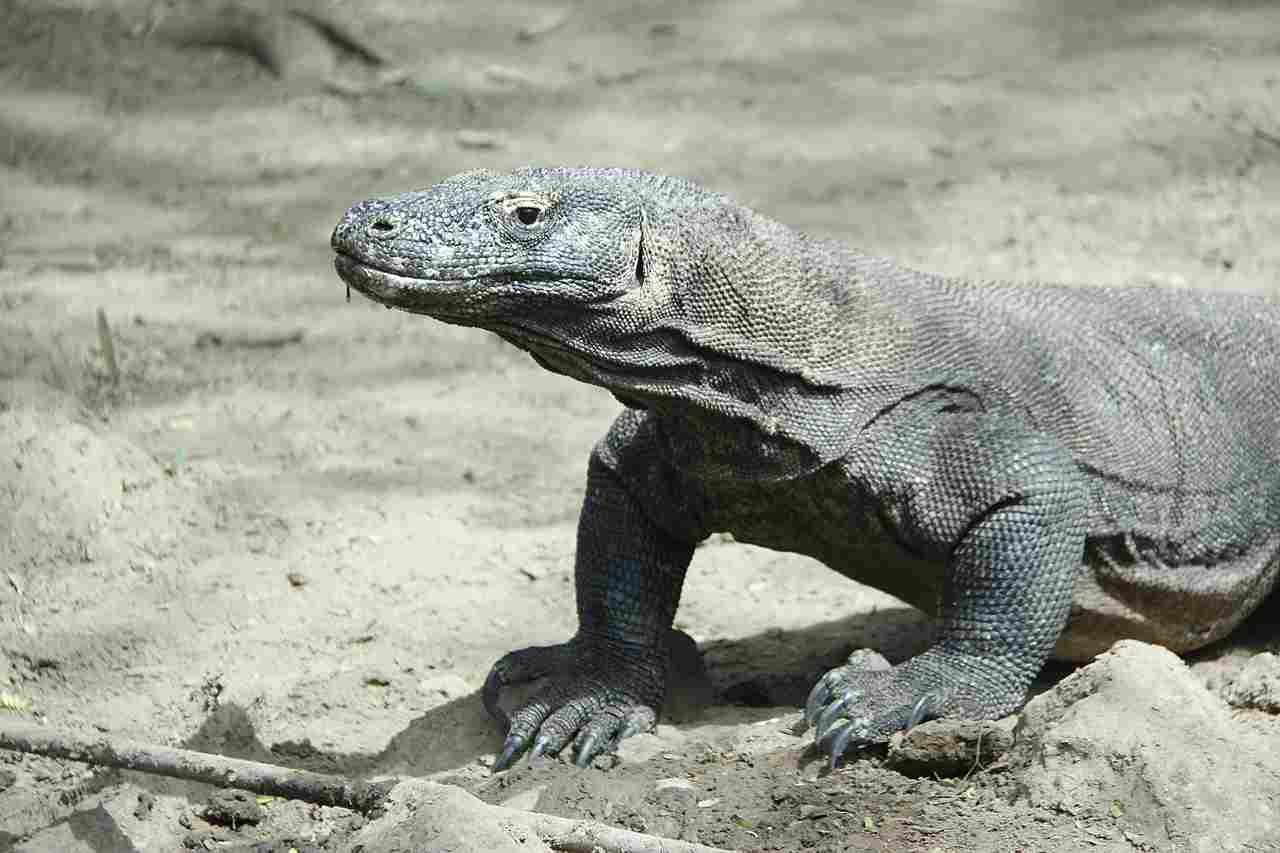
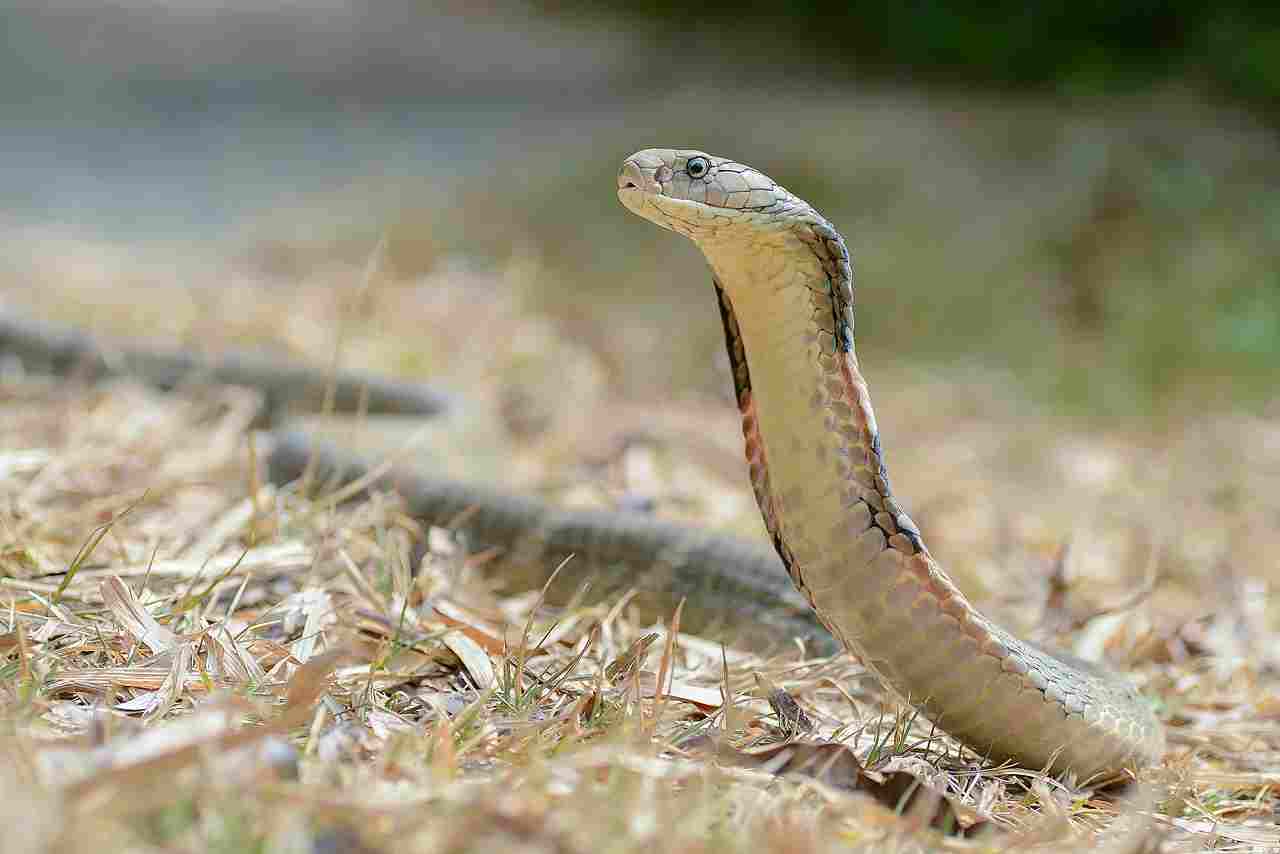
Komodo Dragon:
Stout, powerful build with strong limbs
Rough, scaly skin with coloration ranging from gray to reddish-brown
Long, forked tongue for sensing chemical cues in the environment
Cobra:
Slender, elongated body with distinctive hood when threatened
Smooth, shiny scales often displaying vibrant colors or patterns
Shorter, fixed tongue for detecting scents in the air
Comparison: The komodo dragon has a robust build, while the cobra is more streamlined and possesses a hood for threat display.
Ecological Implications: These physical differences may influence their hunting strategies and roles within their ecosystems.
3. Size
Komodo Dragon:
Length: Up to 10 feet (3 meters)
Weight: Around 150 pounds (68 kilograms)
Cobra:
Length: Varies by species, typically 3 to 6 feet (1 to 2 meters)
Weight: Varies by species, generally much lighter than komodo dragons
Comparison: Komodo dragons are significantly larger and heavier than most cobra species.
Ecological Implications: Size affects prey selection, hunting methods, and overall ecological interactions.
4. Weight
Komodo Dragon:
Around 150 pounds (68 kilograms)
Cobra:
Varies by species, generally much lighter than komodo dragons
Comparison: Komodo dragons are substantially heavier than cobras.
Ecological Implications: Weight influences mobility, energy requirements, and the position of each species in the food chain.
5. Bite Force (PSI)
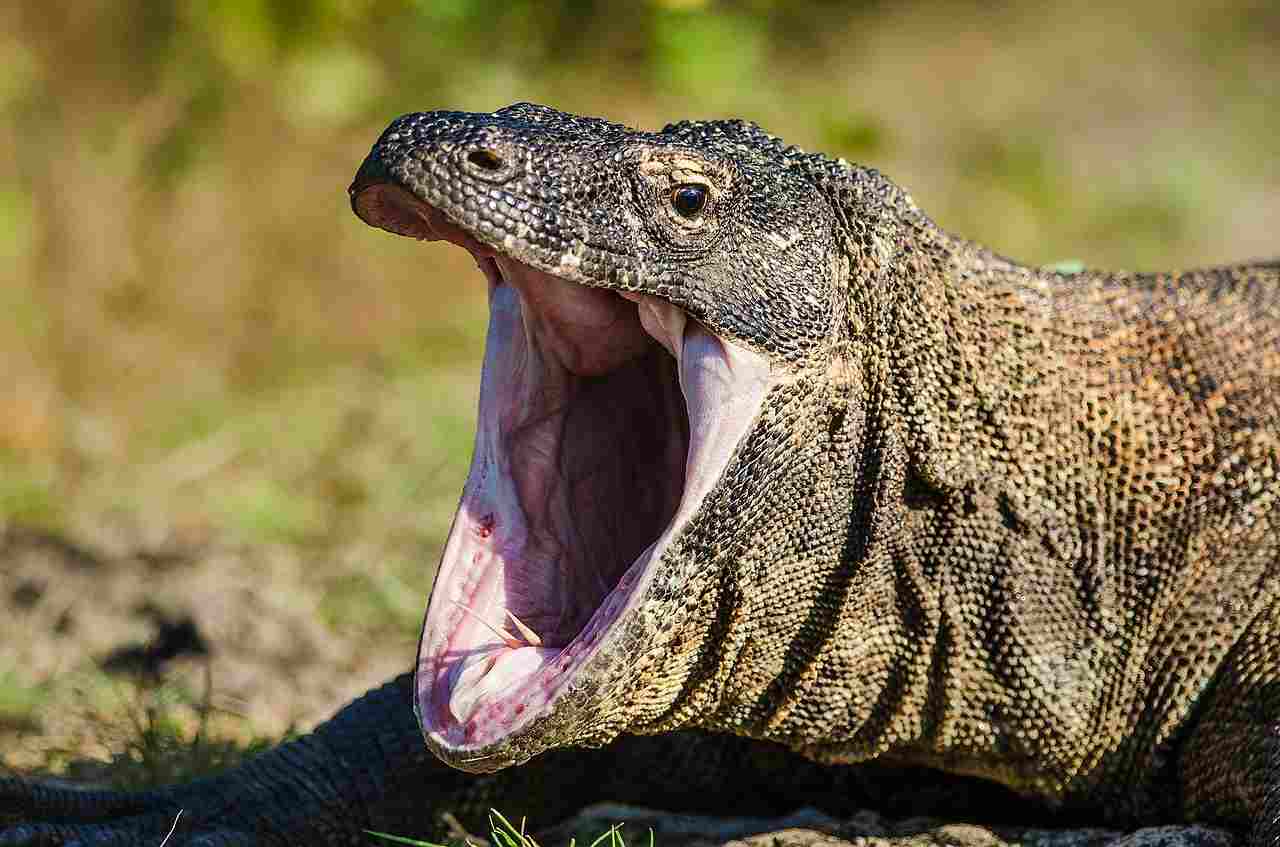
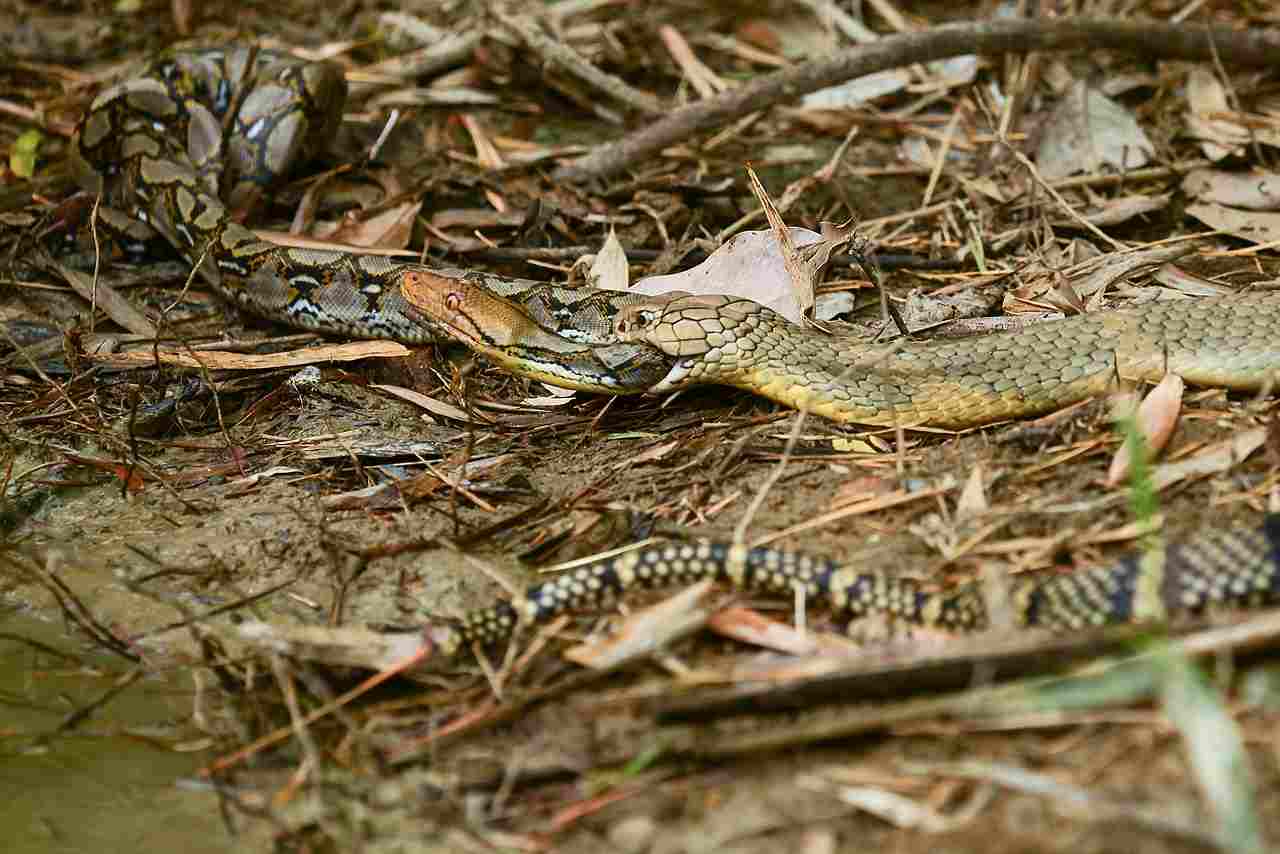
Komodo Dragon:
PSI: Estimated around 60-70
Cobra:
PSI: Varies by species, generally lower than komodo dragons
Comparison: Komodo dragons have a higher bite force than most cobras.
Ecological Implications: Bite force relates to prey capture, consumption efficiency, and the species’ role in maintaining ecological balance.
6. Physical Offensive Advantages
Komodo Dragon:
Powerful bite with sharp teeth
Strong limbs for grappling and subduing prey
Cobra:
Venomous bite delivered via fangs
Quick strikes and agility for surprise attacks
Comparison: Komodo dragons rely on physical strength, while cobras utilize venom and agility for offense.
Ecological Implications: These differences impact their hunting strategies and roles within their ecosystems.
7. Physical Defensive Advantages
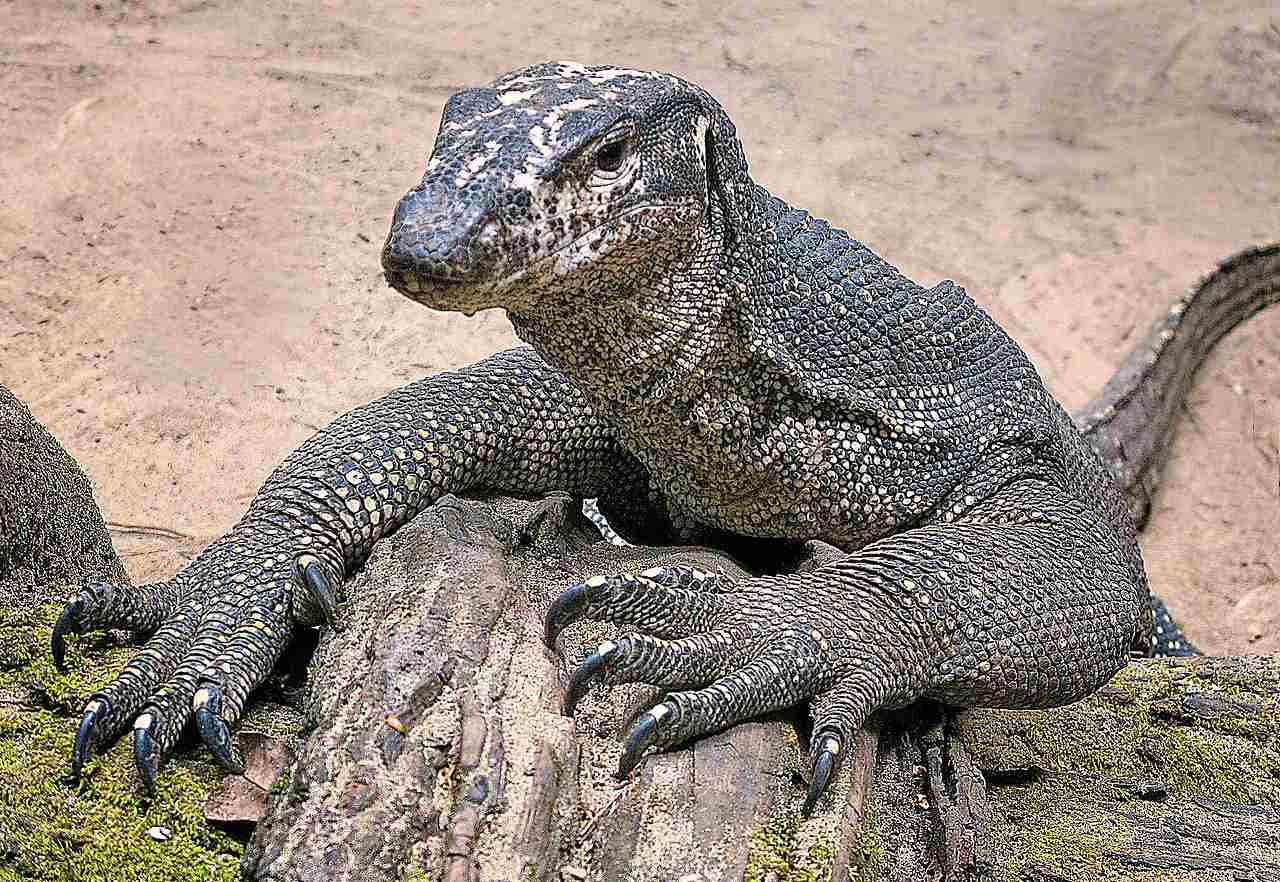
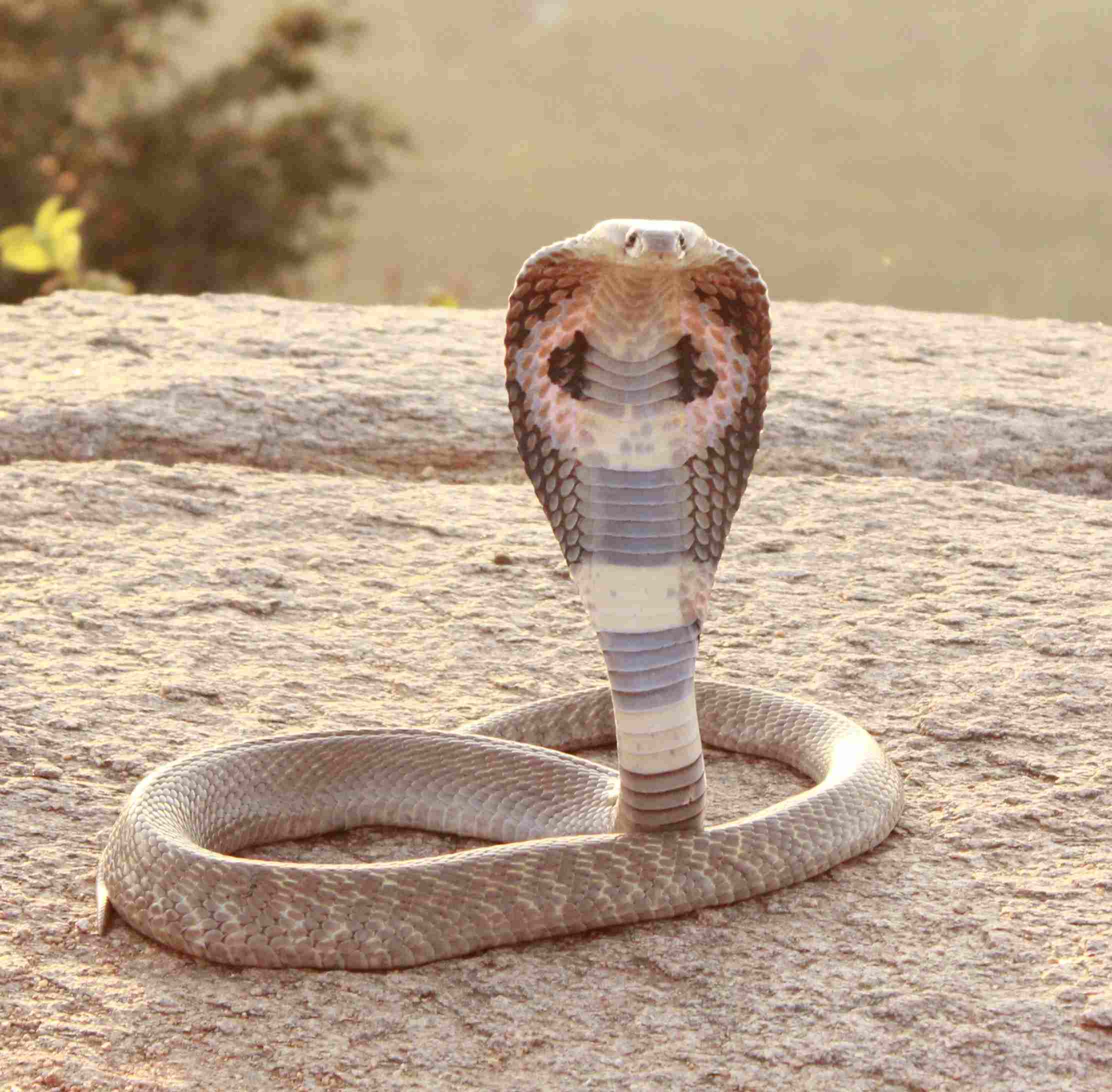
Komodo Dragon:
Thick, scaly skin provides protection
Tail can be used for defense
Cobra:
Hood and intimidating display for threat deterrence
Quick retreat or burrowing as a defensive tactic
Comparison: Komodo dragons have more robust physical defenses, while cobras rely on intimidation and evasion.
Ecological Implications: These defensive adaptations influence interactions with predators and competitors.
8. Speed (Km/hour or Mile/hour)
Komodo Dragon:
Speed: 20 km/h (12 mph) in short bursts
Cobra:
Speed: Varied, but generally faster than komodo dragons for quick escapes
Comparison: Cobras are generally faster in short bursts than komodo dragons.
Ecological Implications: Speed affects hunting success, evasion from predators, and overall survival strategies.
9. Agility
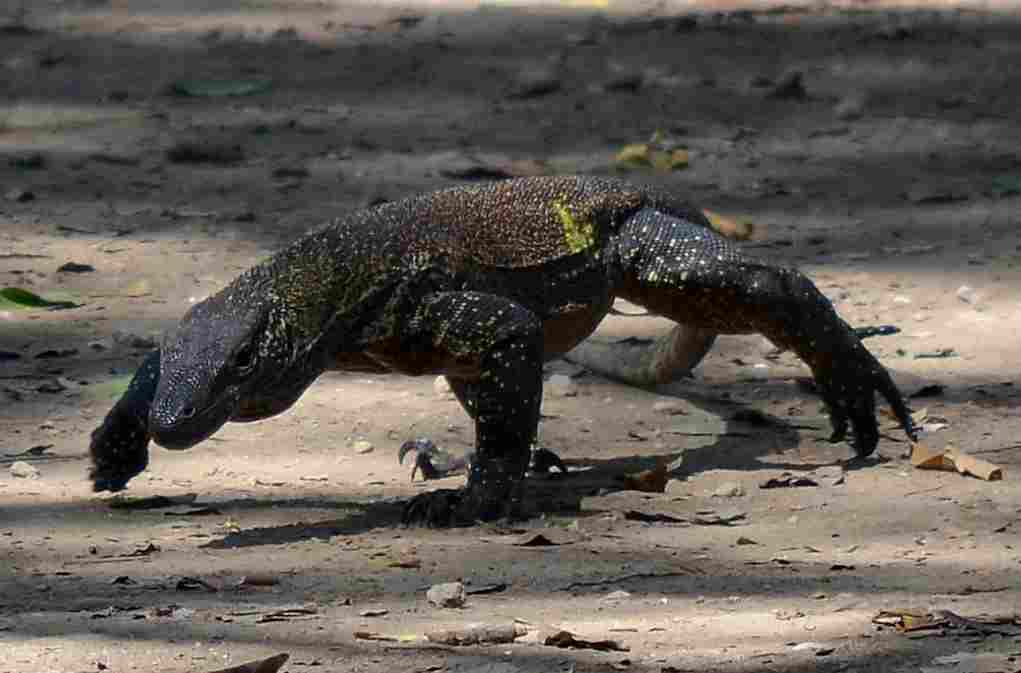
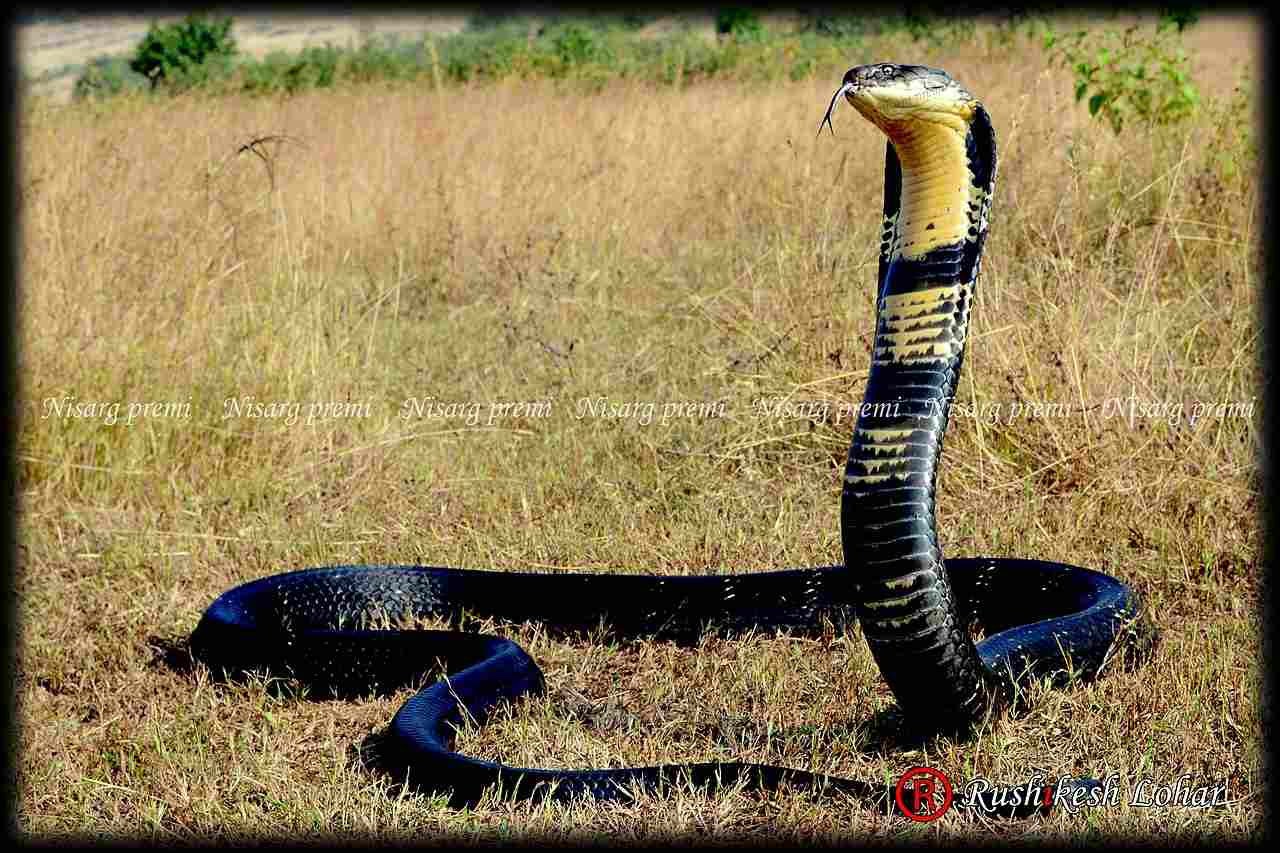
Komodo Dragon:
Moderate agility, capable of climbing and swimming
Cobra:
High agility, capable of quick movements and navigating various terrains
Comparison: Cobras exhibit higher agility compared to komodo dragons.
Ecological Implications: Agility influences hunting success, evasion, and adaptability to diverse environments.
10. Senses
Komodo Dragon:
Well-developed sense of smell with a forked tongue for chemoreception
Excellent vision and hearing
Cobra:
Excellent eyesight for hunting and detecting movement
Keen sense of smell for locating prey and predators
Comparison: Both species rely on a combination of senses, with some variations in emphasis.
Ecological Implications: Sensory adaptations influence their ability to locate prey, avoid predators, and navigate their environments.
11. Overall Physical Capacity
Komodo Dragon:
Powerful, versatile physical capabilities suitable for ambush hunting
Cobra:
Agile and quick with specialized venom delivery system for efficient predation
Comparison: Komodo dragons possess strength, while cobras emphasize speed and venom for efficient predation.
Ecological Implications: These capacities contribute to their respective roles in the ecosystem.
12. Habitat Preference(s) and Geographic Region
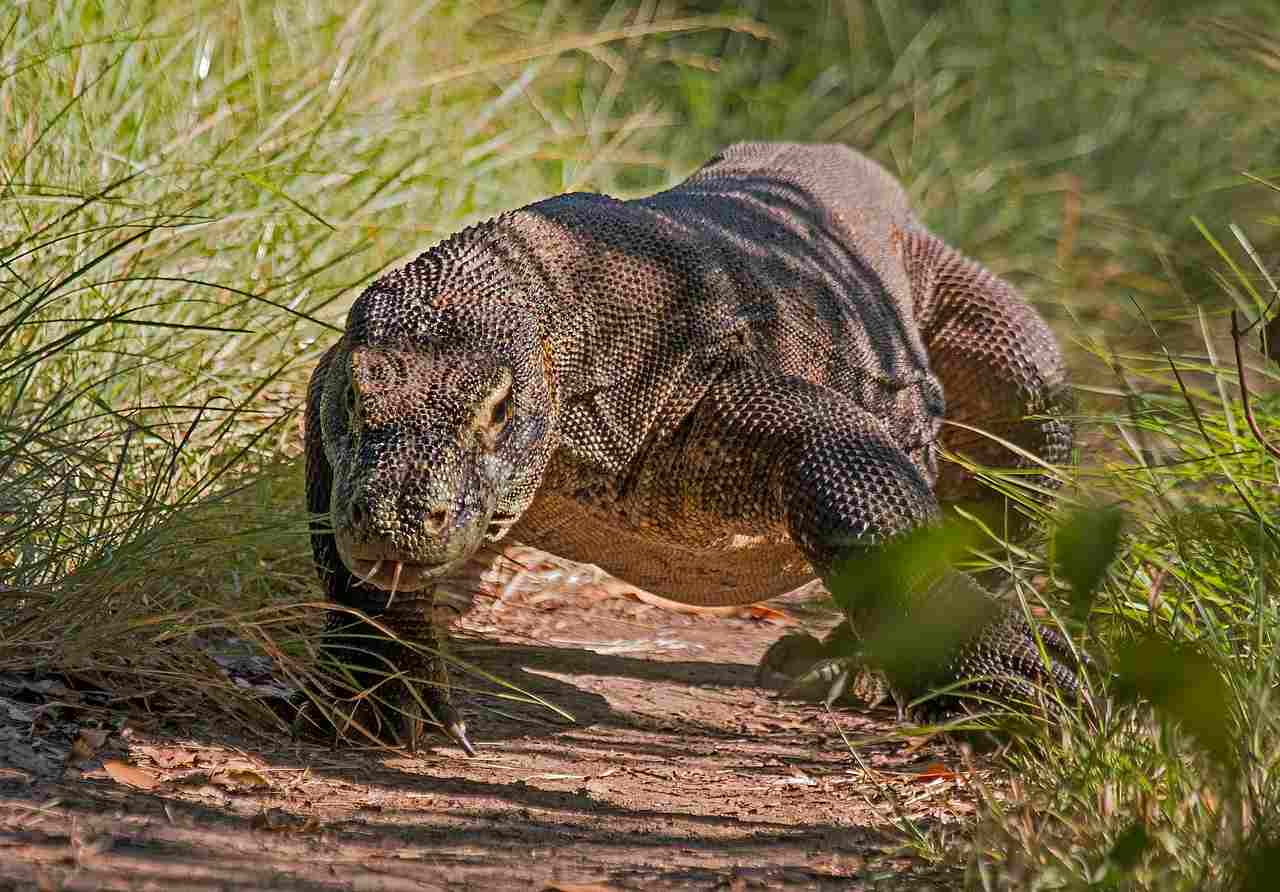
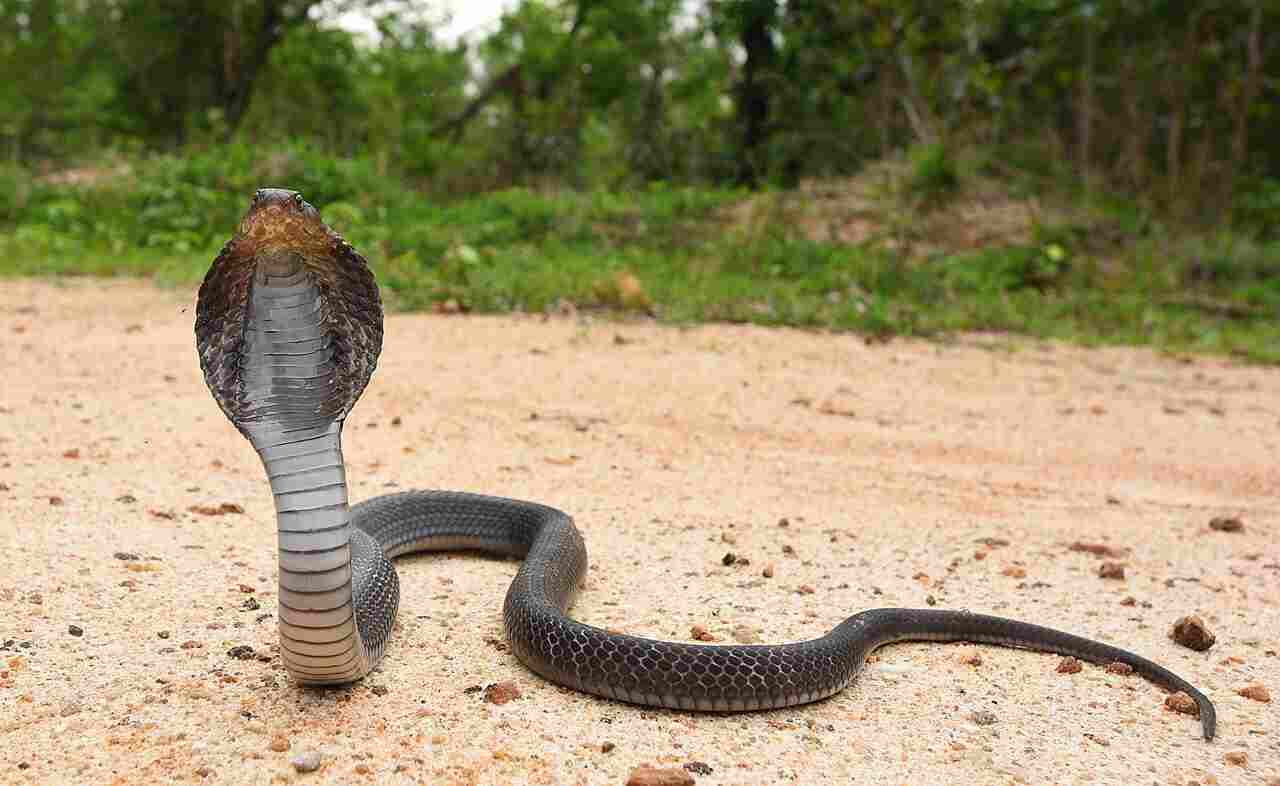
Komodo Dragon:
Prefers tropical savannas and forests
Found on Komodo, Rinca, Flores, Gili Motang Islands (Indonesia)
Cobra:
Diverse habitats including grasslands, forests, and urban areas
Widely distributed across Africa, Asia, and parts of the Middle East
Comparison: While both species exhibit adaptability, their specific habitat preferences and geographic ranges differ.
Ecological Implications: Habitat specialization influences their interactions with other species and overall ecosystem dynamics.
13. Tracks
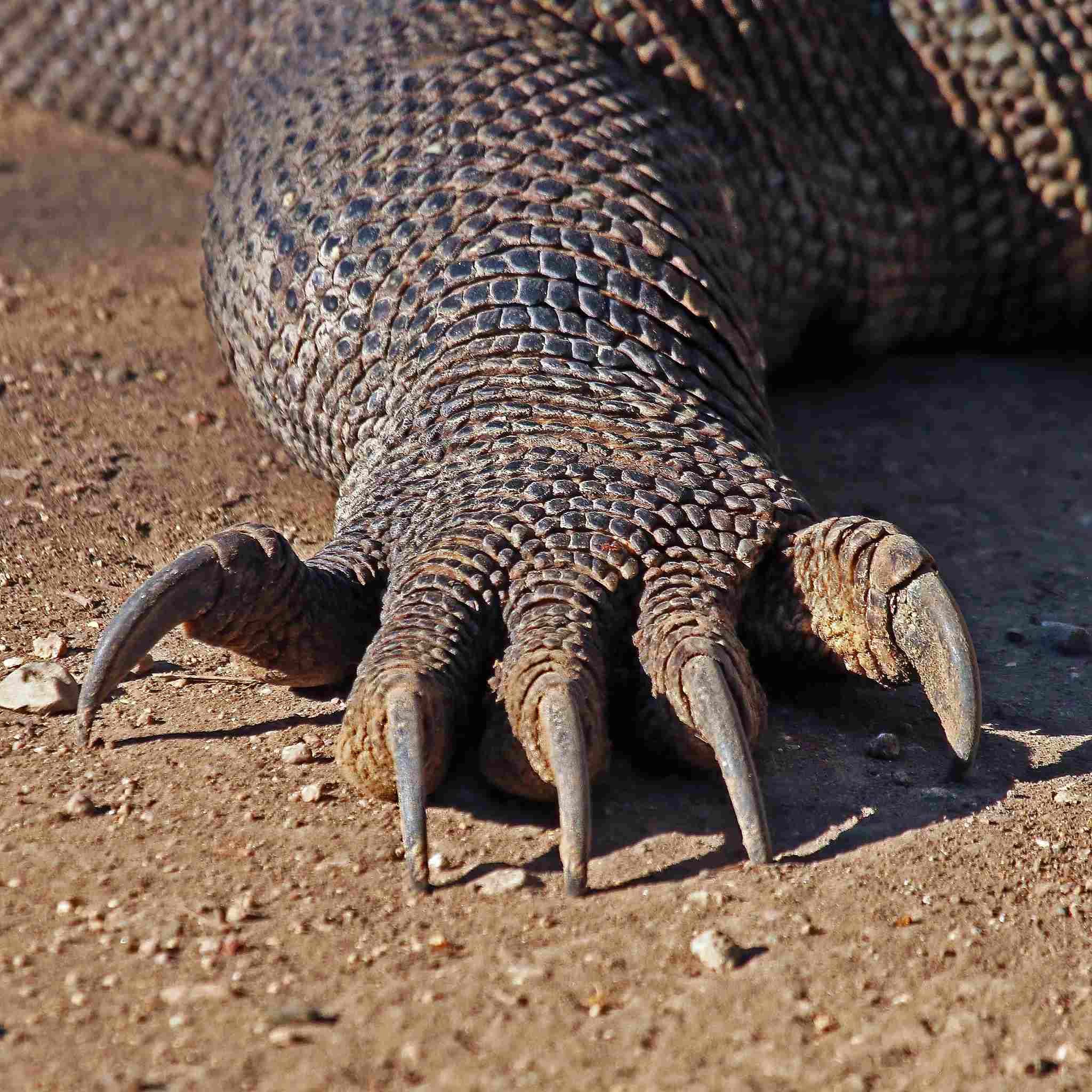
Komodo Dragon:
Clawed tracks resembling those of other monitor lizards
Cobra:
Serpentines tracks with a distinct pattern reflecting their limbless body
Comparison: Track morphology reflects their respective body structures and movement patterns.
Ecological Implications: Tracking helps researchers and wildlife enthusiasts understand their presence and behaviors in specific habitats.
14. Lifespan
Komodo Dragon:
Typically lives 20 to 30 years in the wild
Cobra:
Lifespan varies by species but generally ranges from 15 to 25 years
Comparison: Both species have relatively long lifespans, with some variability among different cobra species.
Ecological Implications: Long lifespans contribute to their roles in maintaining ecological balance over an extended period.
15. Mode of Feeding
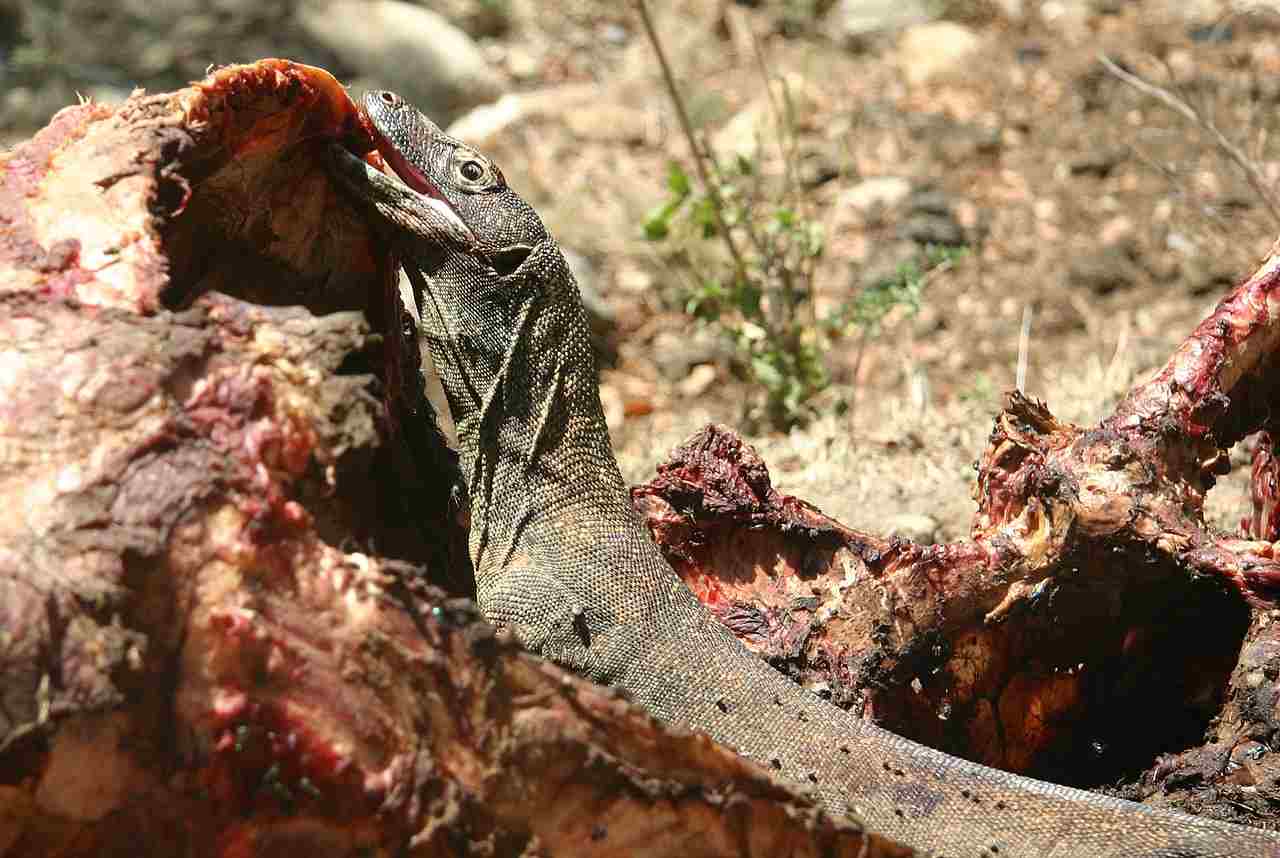
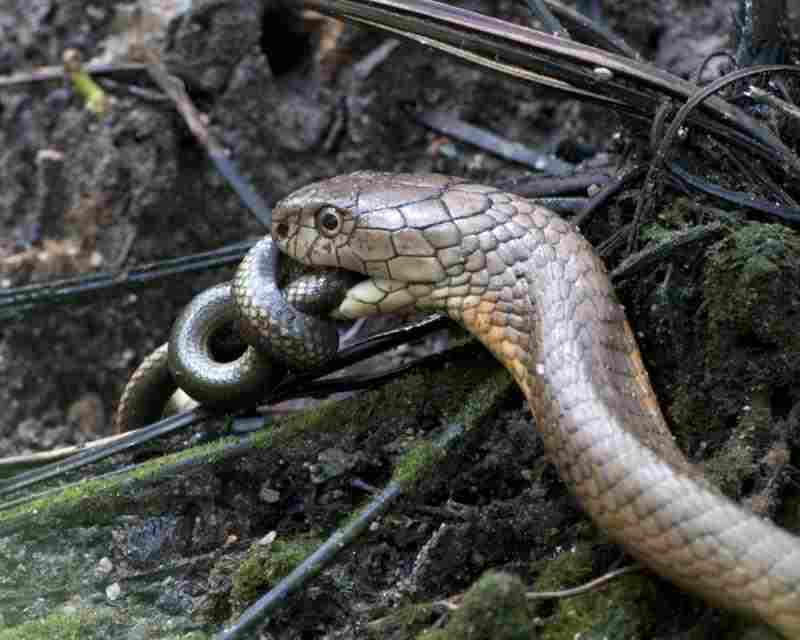
Komodo Dragon:
Carnivorous, primarily hunting vertebrates including mammals and birds
Cobra:
Carnivorous, preying on small mammals, birds, and other reptiles
Comparison: Both species share a carnivorous diet with a focus on different types of prey.
Ecological Implications: Their feeding habits impact the population dynamics of their prey and contribute to the overall food web.
16. Intelligence
Komodo Dragon:
Demonstrates problem-solving abilities and complex social behaviors
Cobra:
Displays some level of intelligence but is less studied in comparison to Komodo dragons
Comparison: Komodo dragons are known for higher intelligence, while cobra intelligence is less extensively documented.
Ecological Implications: Intelligence influences their ability to adapt to changing environments and interact with other species.
17. Social Behavior
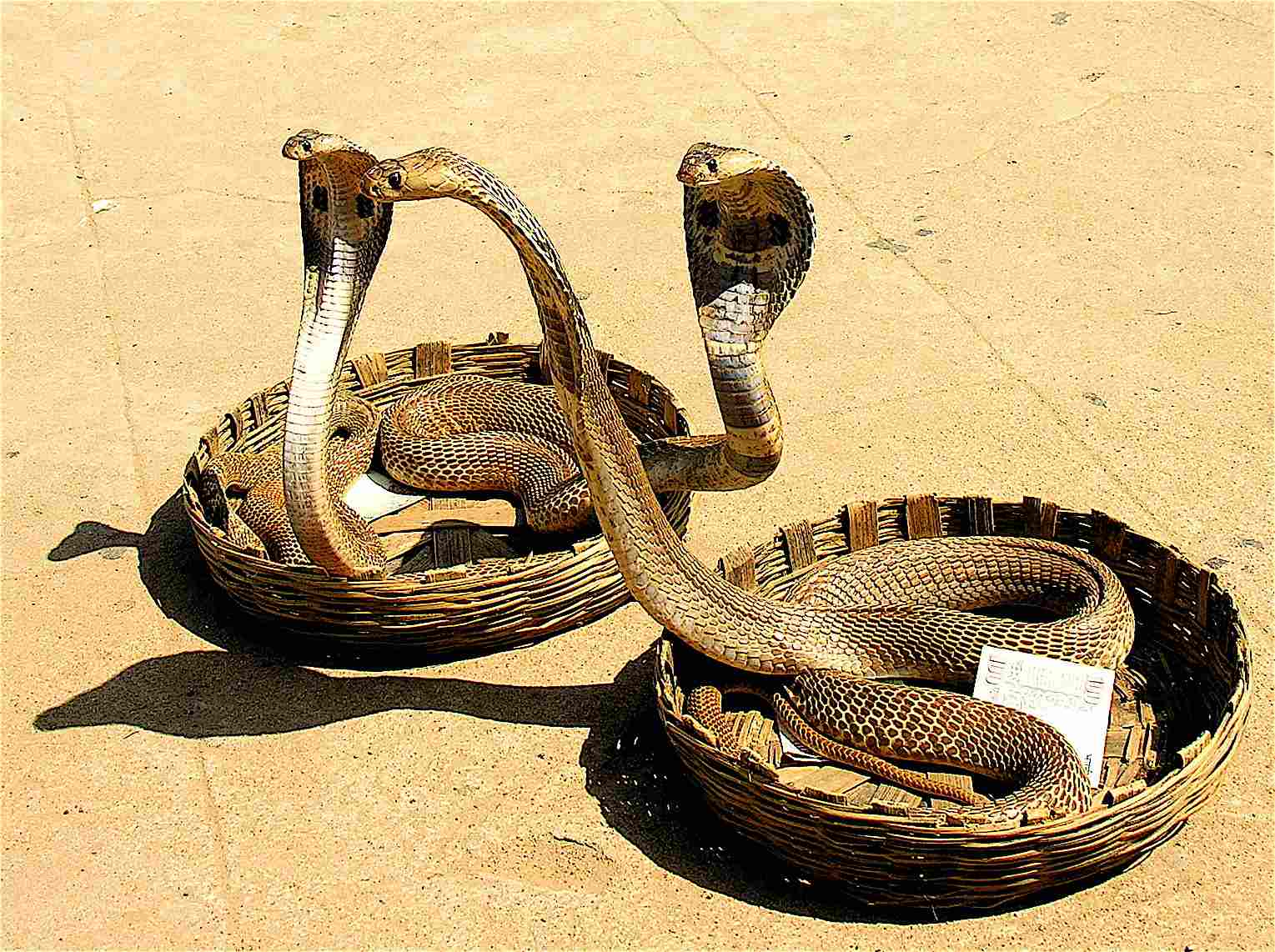
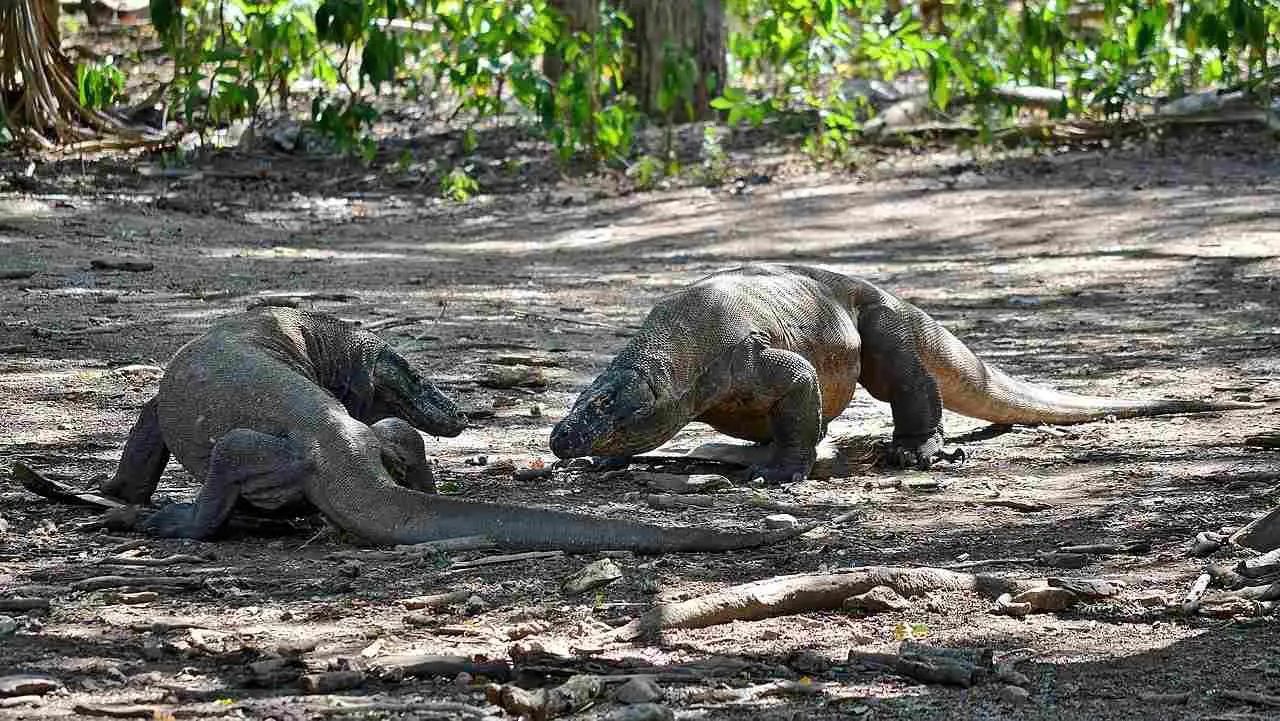
Komodo Dragon:
Solitary, except during mating or when sharing a large carcass
Cobra:
Solitary, with some species displaying territorial behavior
Comparison: Both species generally exhibit solitary behavior, with limited social interactions.
Ecological Implications: Solitary behavior can impact their ecological niche, resource utilization, and interactions with other individuals.
18. Mode of Reproduction
Komodo Dragon:
Oviparous; females lay eggs in nests, and there is no parental care after laying.
Cobra:
Oviparous; females lay eggs in concealed locations, and there is no parental care after laying.
Comparison: Both species share an oviparous mode of reproduction with limited parental involvement.
Ecological Implications: This reproductive strategy influences population dynamics and the survival of offspring.
19. Parental Behavior
Komodo Dragon:
Limited parental care; eggs are buried and left unattended after laying.
Cobra:
Limited parental care; eggs are typically hidden, and there is no post-laying care.
Comparison: Both species exhibit minimal parental care, with a focus on egg laying in concealed locations.
Ecological Implications: Limited parental care can impact the survival rates of offspring and population dynamics.
20. Proximity to Human-Inhabited Areas
Komodo Dragon:
Found on remote islands, but human development poses threats.
Cobra:
Can inhabit diverse areas, including urban settings, increasing chances of encounters with humans.
Comparison: Cobras are more likely to be found in human-inhabited areas than Komodo dragons.
Ecological Implications: Human-cobra interactions may lead to conflicts and potential threats to both humans and cobras.
21. Behavior Toward Humans
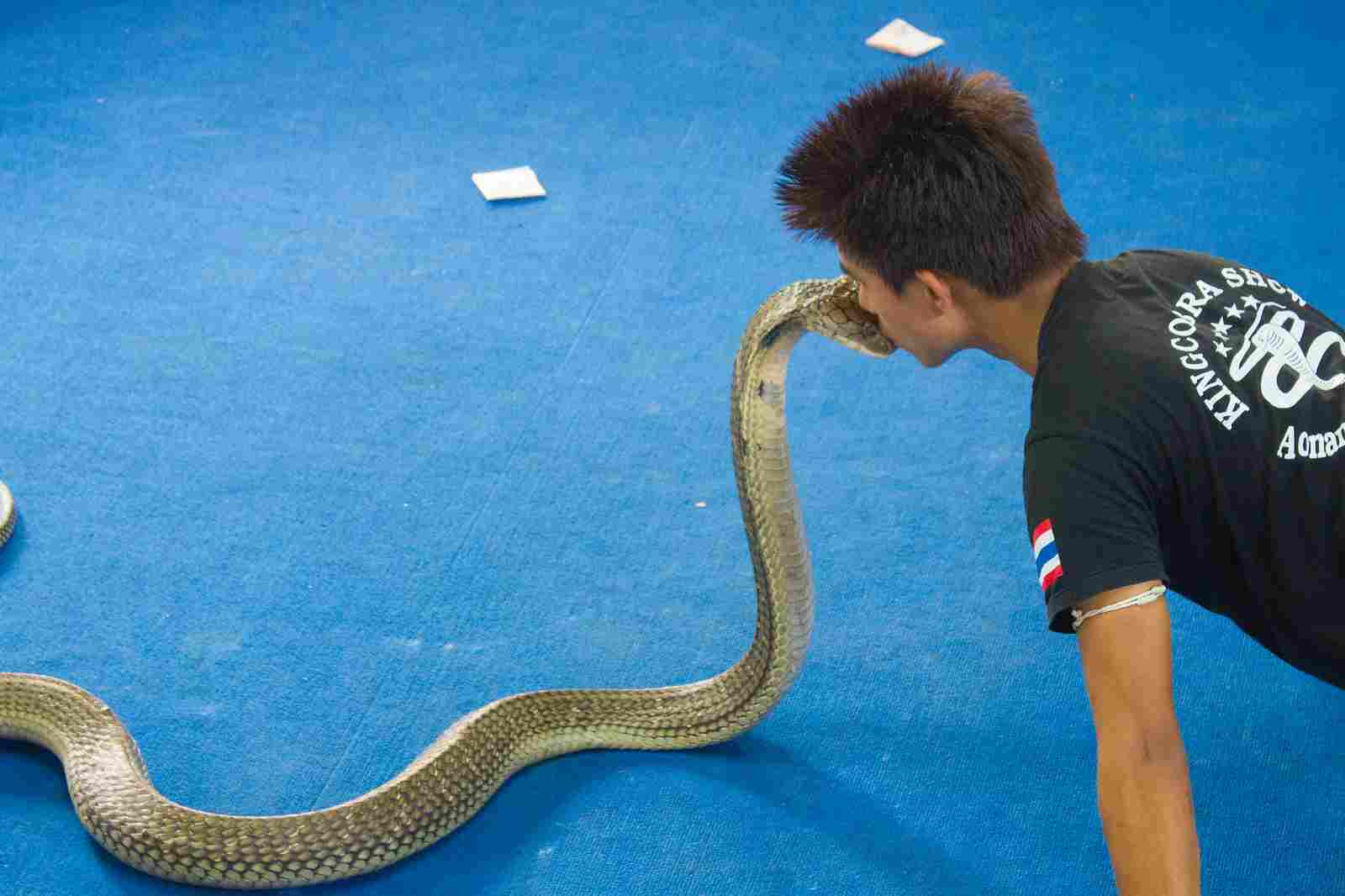
Komodo Dragon:
Generally avoids humans but can be aggressive if provoked.
Cobra:
May exhibit defensive behavior when threatened, including hooding and striking.
Comparison: Both species may display defensive behaviors in response to perceived threats from humans.
Ecological Implications: Human interactions can impact the behavior and survival of these species in different ways.
22. Danger Posed to Humans
Komodo Dragon:
Can pose a threat if cornered or provoked; bites can cause infections due to bacteria in their saliva.
Cobra:
Venomous bite poses a potential danger to humans; some species are highly venomous.
Comparison: Both species can be dangerous to humans, with different mechanisms of harm (bacterial infection from komodo dragons, venom from cobras).
Ecological Implications: Understanding these dangers is crucial for human-wildlife coexistence and conservation efforts.
23. Associated Precautions
Komodo Dragon:
Caution required when in their presence; avoid provoking or cornering them.
Cobra:
Caution needed in areas where cobras are present; awareness and avoidance are key precautions.
Comparison: Similar precautions are necessary for both species, emphasizing the importance of understanding their behaviors.
Ecological Implications: Responsible human behavior contributes to the safety of both wildlife and people.
24. Conservation Status
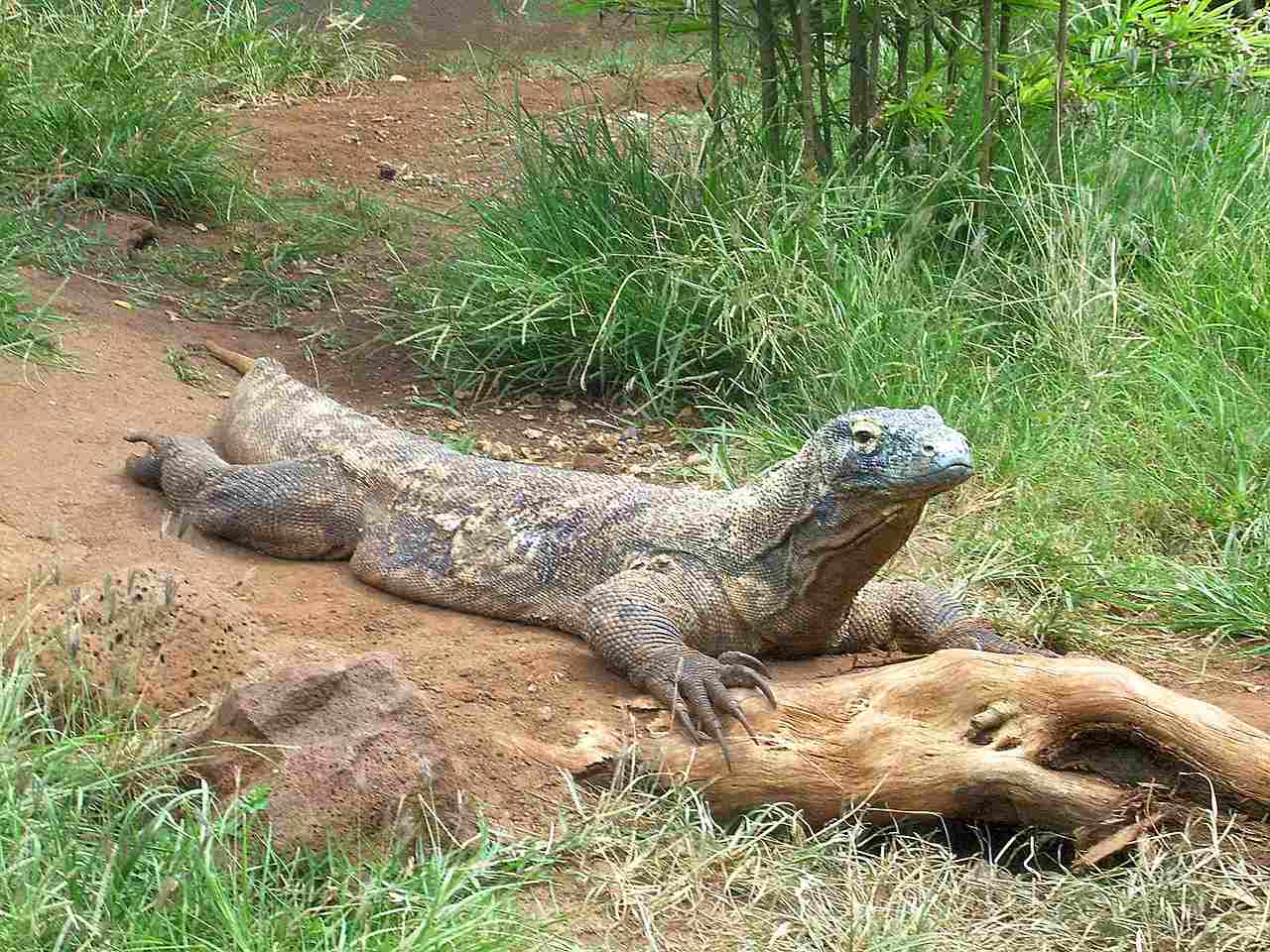
Komodo Dragon:
Vulnerable; facing threats from habitat loss, human-wildlife conflict, and potential prey depletion.
Cobra:
Varied conservation status depending on the species; some are of least concern, while others may face threats.
Comparison: Conservation statuses differ, reflecting distinct threats and population trends for each species.
Ecological Implications: Conservation efforts are crucial to maintaining biodiversity and ecosystem balance.
*Summary of Comparison
Taxonomy:
Komodo Dragon: Varanus komodoensis (Family: Varanidae)
Cobra: Various species under the genus Naja (Family: Elapidae)
Appearance:
Komodo Dragon: Stout build, rough scaly skin, long forked tongue
Cobra: Slender body, hood when threatened, smooth shiny scales
Size:
Komodo Dragon: Up to 10 feet (3 meters)
Cobra: Varies by species, 3 to 6 feet (1 to 2 meters)
Weight:
Komodo Dragon: Around 150 pounds (68 kilograms)
Cobra: Varies by species, generally lighter than Komodo dragons
Bite Force (PSI):
Komodo Dragon: Estimated 60-70 PSI
Cobra: Varies by species, generally lower than Komodo dragons
Physical Offensive Advantages:
Komodo Dragon: Powerful bite, strong limbs
Cobra: Venomous bite, quick strikes, agility
Physical Defensive Advantages:
Komodo Dragon: Thick scaly skin, defensive tail
Cobra: Hood for threat display, quick retreat
Speed:
Komodo Dragon: 20 km/h (12 mph)
Cobra: Varies, generally faster in short bursts than Komodo dragons
Agility:
Komodo Dragon: Moderate agility, capable of climbing and swimming
Cobra: High agility, quick movements
Senses:
Komodo Dragon: Well-developed sense of smell, excellent vision and hearing
Cobra: Excellent eyesight, keen sense of smell
Overall Physical Capacity:
Komodo Dragon: Robust physical capabilities for ambush hunting
Cobra: Agile with specialized venom delivery for efficient predation
Habitat Preference(s) and Geographic Region:
Komodo Dragon: Tropical savannas and forests, Indonesian islands
Cobra: Diverse habitats including grasslands and forests, widely distributed in Africa, Asia, and the Middle East
Tracks:
Komodo Dragon: Clawed tracks resembling other monitor lizards
Cobra: Serpentine tracks reflecting their limbless body
Lifespan:
Komodo Dragon: 20 to 30 years
Cobra: Varies by species, generally 15 to 25 years
Mode of Feeding:
Komodo Dragon: Carnivorous, hunting vertebrates
Cobra: Carnivorous, preying on small mammals, birds, and other reptiles
Intelligence:
Komodo Dragon: Demonstrates problem-solving abilities, complex social behaviors
Cobra: Displays some intelligence, less studied compared to Komodo dragons
Social Behavior:
Komodo Dragon: Solitary, except during mating or sharing large carcasses
Cobra: Generally solitary, some species display territorial behavior
Mode of Reproduction:
Komodo Dragon: Oviparous, females lay eggs with no parental care
Cobra: Oviparous, females lay eggs in concealed locations with no parental care
Parental Behavior:
Komodo Dragon: Limited parental care, eggs buried and left unattended
Cobra: Limited parental care, eggs hidden with no post-laying care
Proximity to Human-Inhabited Areas:
Komodo Dragon: Found on remote islands, but human development poses threats
Cobra: Can inhabit diverse areas, including urban settings
Behavior Toward Humans:
Komodo Dragon: Generally avoids humans but can be aggressive if provoked
Cobra: May exhibit defensive behavior when threatened
Danger Posed to Humans:
Komodo Dragon: Can be a threat if provoked, bites may cause infections
Cobra: Venomous bite poses potential danger
Associated Precautions:
Komodo Dragon: Caution required, avoid provoking or cornering
Cobra: Caution needed in areas where cobras are present, awareness and avoidance are key precautions
Conservation Status:
Komodo Dragon: Vulnerable, facing threats from habitat loss and human-wildlife conflict
Cobra: Varied conservation status depending on species, some are of least concern, others may face threats
Conclusion
I. Similarities
Both are carnivorous reptiles with oviparous reproduction and limited parental care.
Both can pose dangers to humans and require cautious interactions.
II. Differences
Komodo dragons are larger, heavier, and primarily use physical strength in hunting, while cobras rely on venom and agility.
Komodo dragons have a longer lifespan and are more intelligent, demonstrating complex social behaviors.
Cobras are more adaptable to human-inhabited areas, increasing the likelihood of encounters with people.
